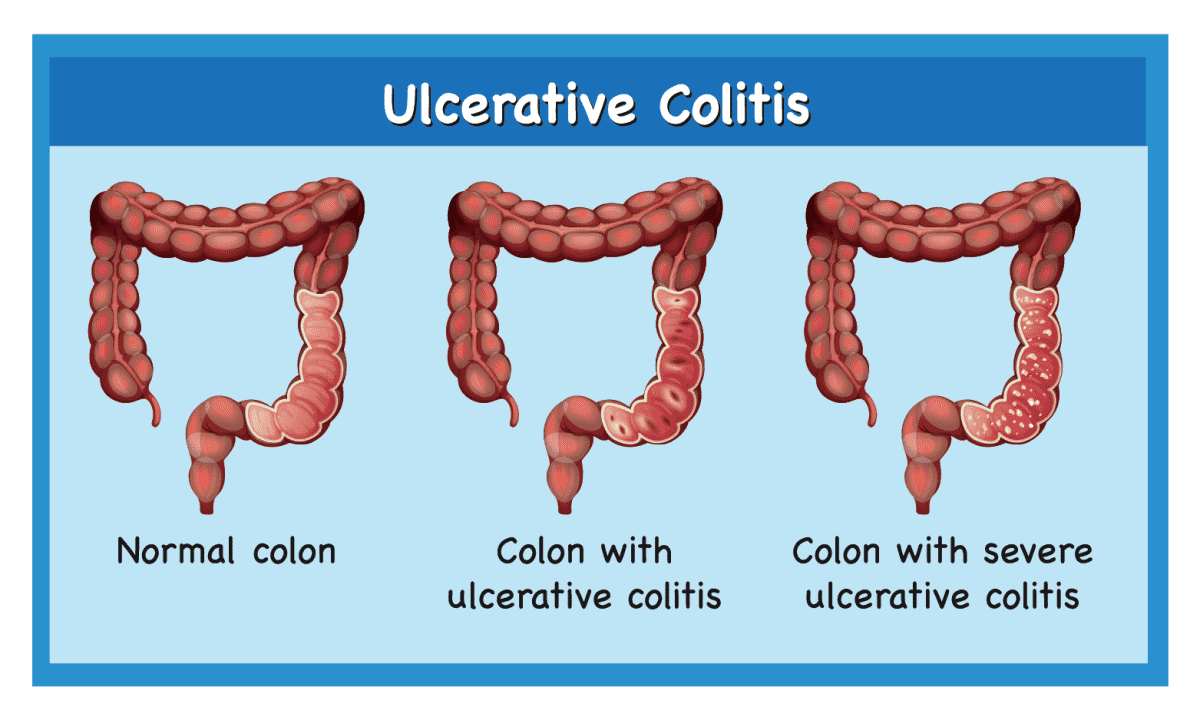What Are The Different Types Of Ulcerative Colitis?
- - Category: Diseases & Conditions
- - 02 Nov, 2022
- - Views: 462
- Save

UC is a chronic disorder of the digestive system that causes inflammation and ulcers in the digestive tract.
Ulcerative colitis (UC) is a chronic disorder of the digestive system that causes inflammation and ulcers in the digestive tract. It is an inflammatory bowel disease (IBD) that affects the colon and rectum of the person. There are different types of ulcerative colitis, with each having different symptoms. The severity of the condition is determined by the severity of inflammation and the affected areas. Therefore, it is important to identify which type of UC the person is suffering from and how it may affect their health.
Types of Ulcerative Colitis
- Ulcerative Proctitis
It is the mildest form of ulcerative colitis in which the bowel inflammation is limited to the rectum. The rectum is the last part of the large intestine, and the disease mostly affects it and spread no more than about 20 cm (8″) into the colon.
Some of its symptoms include
- pain and bleeding in the rectum
- sudden urge to poop
- passing mucus through the rectum
- diarrhea
- pain with bowel movements.
- Proctosigmoiditis
In this form of UC, the colon’s lower end (sigmoid colon) and rectum are affected. Proctosigmoiditis is the result of chronic inflammation in the colon and rectum. Some of its signs and symptoms include
- rectal bleeding
- abdominal cramps and pain
- bloody diarrhea
- the urge to pass stool despite an empty bowel. This condition is called tenesmus.
Most of the symptoms are experienced on the left side of the abdomen, and you may also feel fatigued, have a fever, experience appetite loss, and lose weight. It is the milder type of UC, and the symptoms can be less severe depending on how much the colon and rectum are affected.
- Left-Sided Colitis
This form of UC affects the lower end of the colon, causing inflammation anywhere between the rectum and the portion of the colon, along with cramps on the abdomen’s left side. It is a chronic condition, and the person may experience symptoms all over their life. Some of its signs and symptoms may include
- bloody diarrhea
- pain & cramping on the left side of the abdomen
- tenesmus – a feeling of the constant need to have a bowel movement
- loss of appetite, weight loss, and urgency to eliminate waste.
- Pancolitis
This form of UC affects the entire colon by causing chronic inflammation and ulcers all over it. When the person suffers from pancolitis, they experience inflammation that starts in the rectum and goes beyond the splenic flexure. According to the researchers, its exact cause is still unknown. Some of its signs and symptoms are
- frequent urge for bowel movements
- bloody diarrhea that may be severe sometimes
- pain & cramps in the abdomen
- major weight loss, loss of appetite, and sometimes fever.
When to see the doctor?
You must visit your healthcare provider if you experience strong changes in your bowel habits or notice some symptoms such as:
- Continuous pain and cramping in the abdomen.
- Seeing blood in the stool.
- Continuous diarrhea that is not responding to generic medication.
- Diarrhea that is uncontrollable and may awake you during the night.
- An unexplained fever that may last more than 2 to 3 days.

